The Post-George Floyd Revolution
F. Roger Devlin, American Renaissance, May 11, 2023
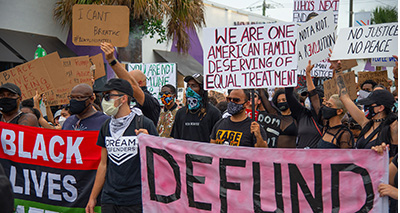
Credit: Mike Shaheen, CC BY 2.0, via Wikimedia Commons
Heather Mac Donald, When Race Trumps Merit: How the Pursuit of Equity Sacrifices Excellence, Destroys Beauty, and Threatens Lives, DW Books, 2023, 319 pp, $28.99 hardcover, $9.99 kindle.
Subscribe to future audio versions of AmRen articles here.
Heather Mac Donald’s seventh book is an account of the latest stage in America’s racial madness, reached since the death of George Floyd in May 2020. Insofar as current thinking has any principled basis, it lies in “disparate impact theory,” something that has been in place since the Supreme Court’s Griggs v. Duke Power Co. decision of 1971. That theory holds that whenever blacks are underrepresented in employment, housing, etc. in comparison with their numbers in the population, the only possible explanation is discrimination.
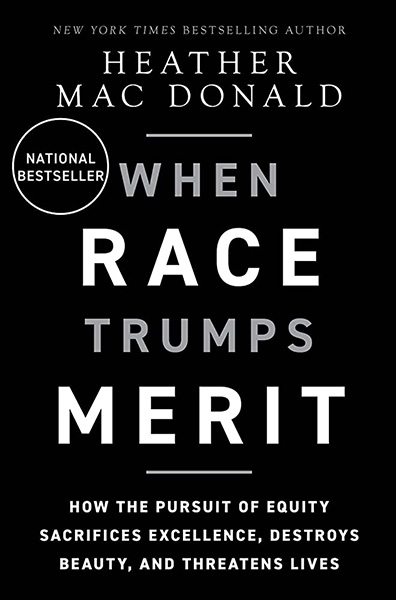
At present it is still possible, although dangerous, to challenge this fallacious idea by citing data on racial gaps in skills and behavior. But such data themselves are increasingly being attacked or hidden. This is the reason standardized test scores are being dropped from school admissions, for example. Such tests have never impeded the practice of racial preferences — different standards have simply been set for the different races. But they have continued to provide evidence of actual skill gaps. For that reason, nearly 2,000 colleges, including the entire University of California system, have now either banned the use of test scores or made them optional.
The next frontier is the rejection of the concept of accomplishment itself, since it leads inevitably to the realization that some people and groups accomplish more than others. The behavioral standards that make accomplishment possible cannot be left intact either. In the summer of 2020, the National Museum of African American History and Culture in Washington, DC, declared that rationality, planning for the future, punctuality, delayed gratification, and being polite were aspects of white culture that “people of color” might not wish to internalize. We are sacrificing civilization itself to maintain the illusion of racial equality.
Medicine and science
When Race Trumps Merit is divided into three main sections, dealing with the worlds of medicine and science, the fine arts, and law and justice.
All the major medical organizations, including the American Medical Association (AMA) and the American Association of Medical Colleges (AAMC), have embraced disparate impact theory. The AMA recently adopted an Organizational Strategic Plan to Embed Racial Justice and Advance Health Equity — 86 jargon-filled pages that, as Miss Mac Donald notes, “is virtually indistinguishable from a black studies department mission statement.” This document calls for “just representation of Black, Indigenous and Latinx people in medical school admissions as well as . . . leadership ranks.” Such representation is allegedly lacking only because people of color have been “excluded, exploited, and deprived of needed resources,” so it is now the AMA’s responsibility to “prioritize and integrate the voices and ideas of people and communities experiencing great injustice.”
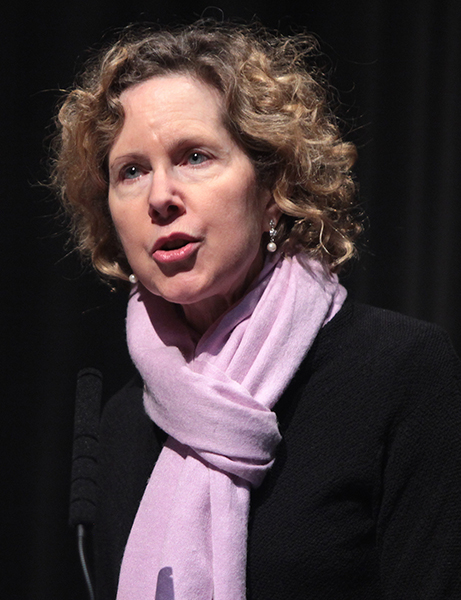
Heather Mac Donald. Photo credit: Gage Skidmore from Peoria, AZ, United States of America, CC BY-SA 2.0, via Wikimedia Commons
Medical schools are dropping the entrance exam known as the MCAT due to the racial gaps it reveals. Instead, they are seeking out, as one admissions officer puts it, students with a “strong appreciation of human rights and social justice.” Blacks are apparently thought to excel in that regard.
In the curriculum itself, medical schools are replacing science with advocacy. More than half of the top 50 medical schools, for example, already require courses in “systemic racism.” As the author points out, part of the appeal of such requirements lies in the creation of new employment slots that can be filled by non-whites, but “every moment spent regurgitating social-justice jargon is time not spent learning how to keep patients alive.” Such practices are no doubt already costing lives, although that is difficult to document.
The new dispensation brooks no opposition. Edward Livingston, deputy editor at the Journal of the American Medical Association (JAMA), participated in a podcast on “Structural Racism for Doctors” in February 2021. He agreed on the importance of making sure all people “have equal opportunities to become successful,” but thought that goal could be better achieved by considering socioeconomic disparities rather than alleged racial animus. JAMA quickly scrubbed the podcast from its website, fired Livingston, and began issuing apologies. The podcast was said to be “inaccurate, offensive, hurtful, and inconsistent with the standards of JAMA.” The journal announced it would be “instituting changes that will address and prevent such failures from happening again.”
An even fiercer reaction greeted Norman Wang of the University of Pittsburgh Medical Center in 2020 when he argued in the Journal of the American Heart Association for an end to racial preferences. Mr. Wang pointed out that years of research showed students admitted under quotas disproportionally drop out because of poor grades and have a harder time passing medical licensing exams. Miss Mac Donald quotes a president-elect of the American Heart Association who wondered out loud how such a paper could have been published, given its “unbalanced, unscientific, and untrue statements” — without citing a single example of such statements. The AAMC claimed Mr. Wang’s paper was factually inaccurate, also without examples. Another doctor denounced Mr. Wang’s “racist beliefs and paper” on Twitter. The editor of the journal apologized for publishing the article and retracted it, assuring readers it would be “improving” its peer-review process to avoid such “missteps” in the future. Mr. Wang not only lost his position as director at the University of Pittsburgh Heart and Vascular Institute, but was banned from all contact with medical students and residents. A lawsuit is pending.
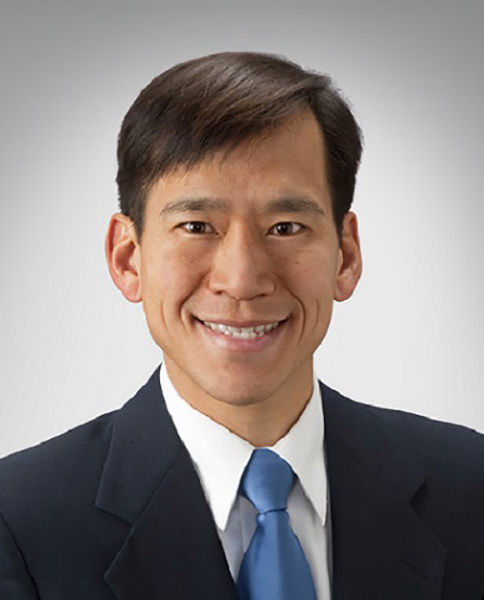
Dr. Norman Wang
One of Mr. Wang’s critics specifically complained that he “sends the message to minority trainees that they owe their position to affirmative action.” But this is indisputably correct: A large majority of blacks attend the schools they do only because of racial preferences. Academic gatekeepers would never defend the policy so fiercely unless they knew it was the only way to achieve racial proportionality. Yet they hope to enforce continued respect for the credentials and institutions they have corrupted.
Young white and Asian students can read the writing on the wall and are increasingly opting against medical careers. Meanwhile, China, America’s chief geopolitical rival, is undeterred by racial concerns. The author writes:
[China] identifies top math talent early on and gives mathematically gifted students accelerated instruction. [Its] rigorous university entrance exams reward achievement, not identity. Undergraduate math competitions provide a pipeline to the best graduate programs. These efforts are working. As of 2018, China ranked number one in the international tests of K-12 math, science, and reading known as PISA; the US ranked twenty-fifth. […] China will likely overtake the US in research dominance in the coming years [and] has already displaced the US in the production of high-impact research studies.
The fine arts
The Western artistic tradition is now called “racist” because it emerged in Europe and thus supposedly is an injustice to everyone else. The canonical repertoire of classical music, for example, is said to be white supremacist. Philip Ewell, music theory professor at Hunter College, claims that Beethoven is celebrated only for his whiteness and maleness. (Prof. Ewell has no explanation for why so many of the composer’s equally white and male contemporaries have fallen into oblivion.)
Prof. Ewell is also noted for his critique of early 20th-century musicologist Heinrich Schenker, who Miss Mac Donald notes had “developed an influential system of analysis that identifies the most important elements of a musical phrase in order to explain that phrase’s emotional impact and role within a work’s thematic development.” She writes:
In a keynote address at a November 2019 music theory conference, Ewell argued that Schenker’s ranking of notes and harmonies within a composition is merely a stand-in for a white-supremacist ranking of the races. The “white racial frame” of Schenkerian analysis has kept blacks from becoming music theorists.
In a similar vein, a speaker at a meeting of the prestigious Composers Forum in June 2020 told the assembled guests, “You are complicit in racism every time you listen to Handel’s Messiah.” Handel, as Miss Mac Donald explains, briefly held stock in a slave-trading company after receiving it in payment for a commission.
Classical music has been facing serious funding shortages, yet there always seems to be enough money for diversity bureaucrats. The Metropolitan Opera had been in the red long before Covid cost it $150 million in revenue. In December 2020, General Manager Peter Gelb told employees that financial cutbacks were a life-and-death matter. By February 2021, Met musicians had gone nearly a year without pay and the stagehands union was locked out. Yet that same month, the Met’s first Chief Diversity Officer — a woman with no background in music — started work. We have no word on her salary, but it is likely to have been generous, because she left a six-figure job at Harvard Law School to accept it.

The Metropolitain Opera House. Professorcornbread, CC BY-SA 4.0, via Wikimedia Commons
In March 2020, members of the Philadelphia Orchestra agreed to a 20-percent pay cut in the hope of reducing a $15-million deficit. Then Covid hit and the Orchestra’s principal venue, the Kimmel Center, shut down for an entire year. Yet in October 2020, the orchestra managed to create a new vice presidency for Inclusion, Diversity, Equity, and Access. That position, too, was filled by someone without a musical background.
Orchestras and opera companies are now routinely accused of excluding black musicians and composers, although the obvious reality is that for decades they have been making special efforts to seek them out. The Juilliard School, for instance, has run a fellowship program for minority students since 1986. Miss Mac Donald writes, “Rather than requiring them to come to New York, Julliard set up regional auditions across the country. Minority applications rose fivefold, but minority admission remained low since most applicants were not qualified.” When black musicians do make the cut, they are so prized that they are treated with great tolerance. Unfortunately, they perceive this. For example, they know they can get away with lateness and absences that would not be tolerated in white students.
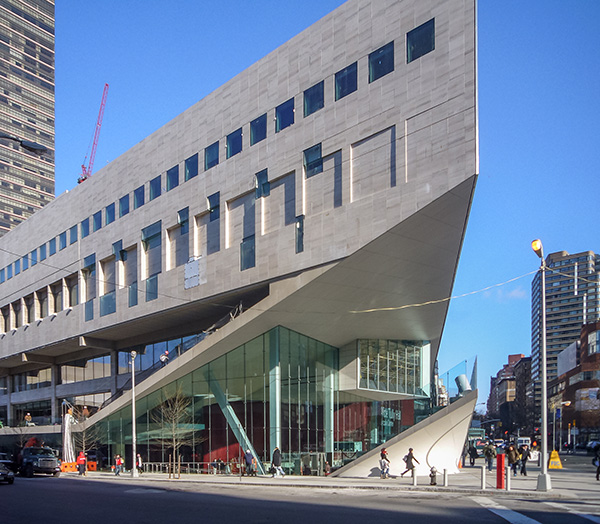
Juilliard School, Alice Tully Hall. Pmasck, CC BY-SA 4.0, via Wikimedia Commons
Anti-racism is now coming for the music curriculum. Departments are under pressure to eliminate the requirement for students to be able to read scores, as that supposedly has a disparate impact on non-whites. As the author explains, one of the distinguishing features of Western music is precisely that it is written down, unlike most other world music. She writes, “[N]otation allows us, miraculously, to hear what people were playing in the fifteenth century.” Such direct influence across the ages is one of the factors that allowed “an unparalleled transformation of style over seven centuries.”
The practice of blind auditioning, adopted long ago to combat the possible bias of judges, is now under attack. Yet Miss Mac Donald explains that eliminating it will not enable schools and orchestras to meet racial quotas because there are not enough qualified black musicians in the pipeline. A career as a classical musician requires an early start. As one put it, “[U]nless you start the violin at age seven, you won’t be auditioning for the New York Philharmonic when you are 25.” And ever fewer children are being exposed to classical music early: From 1962 to 1989, the percentage of high schools with orchestras declined from 67 to 17, while musical instruction programs have also disappeared. This has affected whites as well. Indeed, the most visible racial change in the world of classical music over the past decades has been a large increase in Asians. Only Asian families continue to insist on the necessary early discipline. The author concludes:
Without encouragement at home, the best hope for creating more black classical musicians is to restore widespread music education. The anti-racism advocates have said little about that imperative, however. It’s easier to extract racial quotas from compliant organizations than it is to engineer a change as profound as exposing students to a vanishing musical aesthetic.
Talented teachers with seemingly impeccable anti-racist credentials can be “cancelled” at a moment’s notice. Dona Vaughn was artistic director of opera at the Manhattan School of Music. She had endowed a scholarship specifically for minority musicians at her alma mater, Brevard College in North Carolina. This did not protect her from attacks when she produced Franz Lehár’s supposedly racist opera The Land of Smiles, but she seemed to weather that storm.
Then, in June 2020, she was teaching a class on musical theater via Zoom when an unidentified student suddenly rose to challenge her over the Lehár production from several years before. Since he was taking up class time with an irrelevant matter, she cut him off. A student petition declaring her a “danger to the arts community” quickly gathered more than 1,800 signatures. The petitioners found another proof of her “racism” in her having cast a black man as a butler (many of the best opera roles are servant roles). None of her colleagues came to her defense, and she was fired.
The sheer unpredictability of such moral panics makes them more intimidating. Nixon in China is an acclaimed opera that has been produced repeatedly since its first performance in 1987. From the beginning, white singers have usually been cast in the Chinese roles without controversy. Then, in June 2021, an advocacy organization calling itself British East & South Asians in Theatre and on Screen (BEATS) denounced the practice as “yellowface,” the supposed moral equivalent of blackface. The Scottish Opera withdrew its production of Nixon in China from an award competition, apologized for causing “offence,” and asked for “space” to learn from its errors. Do not expect any protests against “whiteface,” however. As a BEATS spokesman explains: “Casting a black singer as a white historical personage can be progressive . . . [but] . . . casting a white actor in a specifically non-white role is regressive.”
Since the 19th century, ballet dancers have applied white body paint in certain works, especially those featuring a supernatural element. In 2018, the Staatsballett Berlin staged Swan Lake, in which white body paint has traditionally been used to increase the illusion that the dancers are swans. The company’s sole black dancer, Chloé Lopes Gomes, lamented, “I’ll never look white.” The ballet mistress responded, “Well, you will have to put on more than the other girls.” This trivial incident went unrecorded for two years until Gomes became one of 12 dancers not to have their contract renewed. Suddenly the imagined slight became useful to her and was soon featured on the front page of the New York Times arts section. The Staatsballett Berlin issued a groveling apology. As the author notes, the scandal could not have been prevented, even if the ballet mistress had instead told Gomes, “Don’t bother with the body paint. You’re too black. It will never work.” Racism accusations are unfalsifiable, governed by the principle of “heads I win, tails you lose.”

The Art Institute of Chicago has sponsored a volunteer docent program since 1961. The volunteer basis of the program has never served as an excuse for lax standards. Prospective docents attend curatorial lectures, read widely in the museum’s library, and write papers proposing ways to communicate art historical concepts to children and other visitors. The 18-month training program is run with “military” discipline, according to one trainee, and gives docents a body of knowledge virtually equivalent to a Master of Fine Arts degree. Even after graduating, docents follow up with ongoing study of art history and pedagogy.
In September 2021, the Art Institute shut down this program because too many of the docents were white. More than 80 unpaid docents were replaced with six salaried, part-time employees chosen on the basis of their anti-racist credentials. Obviously, they will be unable to offer nearly as many tours or presentations, and the chances that they will be as passionate about art as the white volunteers are nil. Following the docent sacking, letter writers to the Chicago Tribune speculated that if the Art Institute can do without volunteers, it must not need financial support either.
Law and justice
As with medical schools, the application of disparate impact theory to the criminal justice system will cost lives, but that gives anti-racist zealots no pause. Every disparity in arrest or incarceration rates must now be attributed to racism, and criminal penalties and enforcement are being softened to eliminate disparities.
The case of New York City is especially unfortunate since the changes followed a historic drop in crime attributable to the aggressive prosecution of minor offences under mayors Rudy Giuliani and Michael Bloomberg. Even the execrable Bill de Blasio kept his predecessors’ successful policies for a time, even as the city council and state legislature were starting to lighten criminal penalties and eliminate bail for all misdemeanors and some felonies. District attorneys began refusing to prosecute certain offences such as subway turnstile jumping.

Former mayor Rudy Giuliani. Credit: Gage Skidmore via Flickr, CC BY-SA 2.0
Then came the George Floyd riots, which saw mobs of New Yorkers smashing storefronts, looting, burning police cars, and attacking officers with bricks and metal pipes. Police worked back-to-back shifts without time to sleep, and nearly 400 were injured. Mr. De Blasio called the riots “justified” and urged police to use a “light touch” since people were “angry for a reason.” Eventually he imposed a curfew, but DA Cyrus Vance refused to prosecute violations.
On June 15, New York’s Police Commissioner announced he was dismantling the undercover units charged with getting armed felons off the streets, since the officers were involved in a disproportionate number of shootings. This was obviously due to the nature of their work. As Miss Mac Donald says, “[C]onfronting armed, violent, and resisting suspects was virtually their job description.” Despite this, only 3 percent of these officers had discharged their weapons at suspects in 2019, a figure that suggests considerable restraint. After the units were disbanded, shootings in the following weeks jumped 205 percent over the same period the year before, while gunshot injuries climbed 238 percent. The author notes, “[S]uspects knew their chances of getting stopped with a gun had dropped enormously.”
The police cannot win: When they let up on enforcement for fear of being branded racist, they are accused of racist indifference to the crime increases that inevitably follow. A number of prominent New York politicians are on record making both types of accusations.
The author describes media double standards regarding crime. The most obvious is that race goes unreported whenever suspects are black, but is always considered relevant in the case of white suspects. But bias goes much further than that. The author highlights two cases in which we can see how expectations for parental responsibility vary by race.
In March 2021, a 13-year-old Latino boy named Adam Toledo was shot while roaming the streets of Chicago with a fellow gang member at 2:30 a.m. He had a handgun at the time. Shortly afterwards, in an unrelated incident, a seven-year-old black girl named Jaslyn Adams was gunned down by her heroin-dealing father’s gang rivals as the two were parked at a McDonald’s drive-through. The following day, Chicago mayor Lori Lightfoot made a visit to McDonald’s headquarters. Afterwards, CEO Chris Kempczinski sent Lightfoot a text message, saying:
p.s. tragic shootings in last week, both at our restaurant yesterday and with Adam Toldeo [sic]. With both, the parents failed those kids which I know is something you can’t say. Even harder to fix.
Mr. Kempczinski found out the hard way that attributing irresponsibility to non-white parents is indeed “something you can’t say.” A coalition of activist groups got hold of his message several months later and published an open letter to him, declaring: “Your text message was ignorant, racist and unacceptable.” Both McDonald’s employees and racial advocates protested outside the company’s headquarters, calling for his resignation and demanding “reparations.”
Jaslyn Adams’s mother emerged to say, “How dare you judge me! . . . You come from privilege. You can’t speak about me.”
Even Mayor Lightfoot’s office issued a statement: “Victim shaming has no place in this conversation.” (As the author explains, “‘Victim shaming’ is a euphemism for ascribing moral agency to a favored victim class.”)
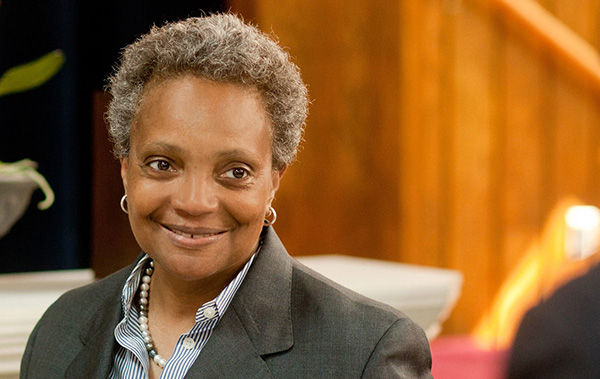
Mayor Lori Lightfoot. Credit: Prachatai via Flickr, CC BY-NC-ND 2.0
In response, the CEO accused himself of racial insensitivity and held “listening sessions” with franchise owners and employees. Here are a few samples from his various apologies:
Not taking the time to think about this from their viewpoint was wrong, and lacked the empathy and compassion I feel for these families. This is a lesson I will carry with me. […] My texts to the Mayor of Chicago were wrong — plain and simple. I am truly sorry and I know I have let you down. I also know this has conflicted with our values.
The author suggests that Mr. Kempczinski had gotten it right the first time. If 13-year-old Adam Toledo had been at home in bed at 2:30 a.m., he would be alive. Did his (single) mother know where he was, or that he had a gun? We do not know, for the questions cannot be asked. Jaslyn Adams’s drug-dealing father certainly knew his enemies were looking for him when he took his daughter to McDonald’s. Just the day before the shooting he had tweeted: “Opps probably downstairs waiting for me.”
This lack of interest in holding non-white parents responsible contrasts sharply with what happened in the case of Ethan Crumbley, a 15-year-old white boy who allegedly killed four fellow students at his Michigan high school in November 2021. Three days after the shooting, a district attorney filed involuntary manslaughter charges against the boy’s parents for having allowed him to access a legally purchased handgun, reasoning that they should have known the boy was primed to kill his classmates. The author notes:
[T]the Crumbleys’ very presence in their son’s life and their responsiveness to the authorities made them available as a target of criminal liability. On the day of the shooting, a teacher noticed a drawing Ethan had made of a handgun pointing at the words “the thoughts won’t stop help me.” The Crumbleys had recently bought Ethan a pistol for Christmas. Following interception of the note, school officials summoned Ethan’s parents to school. They promptly showed up but declined to take Ethan home because they both worked and didn’t want to send him to an empty house. Had Ethan’s parents been from the inner city and not shown up at all, no media figure would have objected.
In fact, says Miss Mac Donald, “The press, Democratic politicians, and gun-control advocates greeted the homicide charges against the Crumbley parents with ecstatic approbation.”
Many in the media deny outright that blacks are responsible for a disproportionate amount of crime. Yet the author notes their habit of treating any concern a white politician expresses over crime as a “racist dog whistle.” According to a Washington Post columnist, President Donald Trump’s defense of police and condemnation of looting and violence after the Kenosha riots of August 2020 were “undisguised white supremacy.”
Conclusion
Some of the incidents Heather Mac Donald describes, especially within the arts academy, are the kind that might have occurred a generation ago. However, certain novelties suggest that America’s racial revolution has entered a new phase. One such novelty already referred to is the growing impermissibility of mentioning racial gaps in skills and behavior, even when attributing them to “cultural” factors. Another is preemptive self-accusation: In the wake of the George Floyd riots, observers who thought they had lost the capacity to be surprised at America’s racial madness were bewildered to see eminent people and institutions rushing forward to confess their “racism” like the victims of Stalinist show trials. Miss Mac Donald has a noteworthy take on this:
The self-abasement common in the post-George Floyd era is actually a form of self-aggrandizement. Individuals and institutions blame themselves for inequalities for which they have no responsibility in order to claim a current impact they do not possess. [Thus they] position themselves as essential to the anti-racism crusade.
Under a regime of anti-racism, cultural authority can come from only two sources: “the assertion of victimhood or the acknowledgement of oneself as a victimizer.” Whites cannot adopt the first strategy, so “that leaves the vigorous assertion of racial guilt as the second-best means of retaining social capital.”
Frustrated by the failure of white and Asian men to fight back against the diversity juggernaut, the author asked one research scientist, “How much longer would they continue to allow their hard work and accomplishments to be disparaged and sidelined?” His reply:
We need our jobs. Our peers will turn on us. Speak out, lose job forever, be quickly forgotten and abandoned. I admire the bravery of those who speak out but they will be systematically exterminated until they are all gone. The system will have to rot from within and be reinvented, which will take 50-100 years.
Miss Mac Donald suggests a membership organization might be able to mitigate such fears.
[An organization] dedicated to the unapologetic defense of color-blind standards of achievement and behavior would relentlessly provide the data that explain the lack of racial proportionality in meritocratic institutions and the criminal justice system. If one of its members were punished for opposing the latest application of disparate impact analysis, the organization would come to his defense. Ideally, there would be enough strength in numbers to avoid its members being cancelled.
No civilization can long survive without standards, so the current dispensation certainly cannot last. But no one can predict whether it will be followed by a return to color blindness or an evolution toward racial separation.















